Dhaka. Part Two. Slums
Along the active railway tracks, which run through almost the entire Dhaka, stretches a line of perhaps the most dreadful dwellings in India and neighboring states.
The slums of Dhaka, unlike the famous Mumbai neighborhood of Dharavi and the Muslim quarters of Delhi, do not cluster on the city map but stretch out in length. Therefore, they probably are not even considered among the slums. Hence, they don’t even have their own name. Satellite maps simply refer to them as the “railway colony.” In some sources, they mention the name “Begun Bari” and that the slums are located somewhere around Tejgaon area.
If you look at the map of Dhaka, you can see that at a certain point, the railway tracks make a ninety-degree turn. It is precisely there where the best entrance to the slum area is located. Finding an exit from them will only be possible several kilometers away.
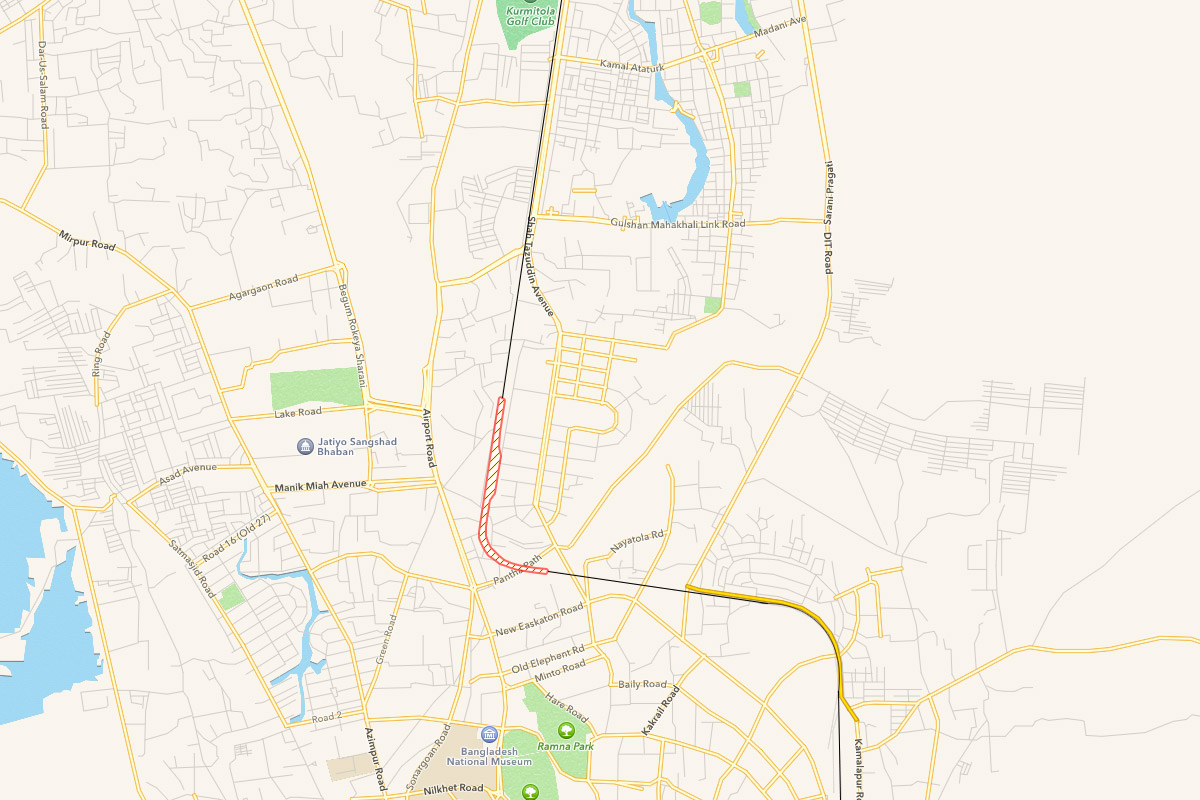
On the approach to the slums, the dusty sidewalks of the metropolis abruptly turn into muddy village tracks.

Around the corner, a view of the railway tracks opens up, lined on both sides with some rusty and dilapidated structures. There is a crowd of people moving along the rails in both directions.

Upon closer inspection, one can begin to discern someone’s dwelling amidst these cluttered structures.

This is not a dump. People live here, literally within a meter of the railway track. It’s an active railway where trains regularly pass by!

That’s how they live, exactly like that. The houses are assembled from whatever is available, typically bamboo sticks arranged in a lattice pattern and covered with plastic sheets and rags. The walls are constructed in the same manner as the roof. The entrance to the house is often just covered with some piece of cloth.

In the slums of Dhaka, people live as best they can. Some residents have their own household, for example, they raise goats.
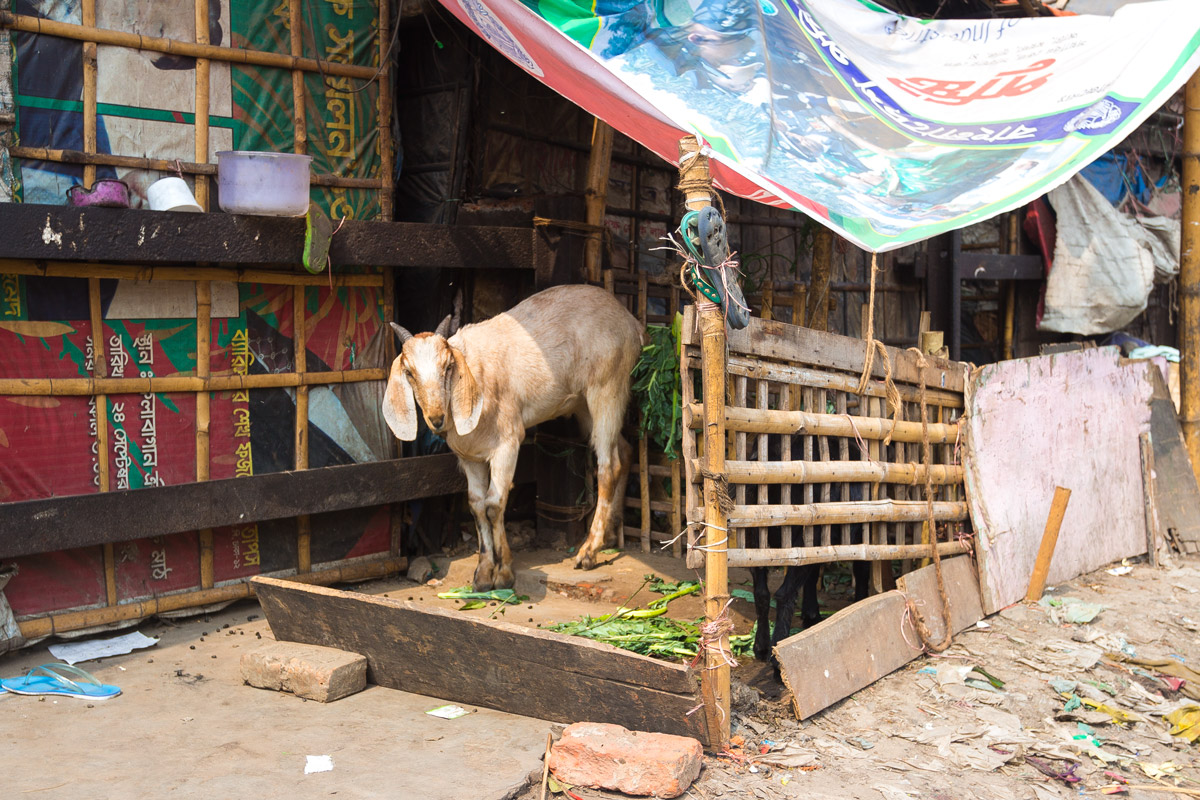
Some keep chickens and sell eggs... Do they sell them? Probably, a barter system thrives within the slums. In this society, money is essentially unnecessary, except perhaps for external economic connections with the rest of the city.

Market.

Someone’s modest harvest of peppers is drying in the sun.

Someone has a wider range of products for sale. It’s interesting where this trade got so many vegetables from. They can’t be grown on the railway tracks.

Pigeon coops. Pedigree pigeons. Perhaps they are bred for eggs. It’s difficult to ascertain even from the local residents as few of them know English.
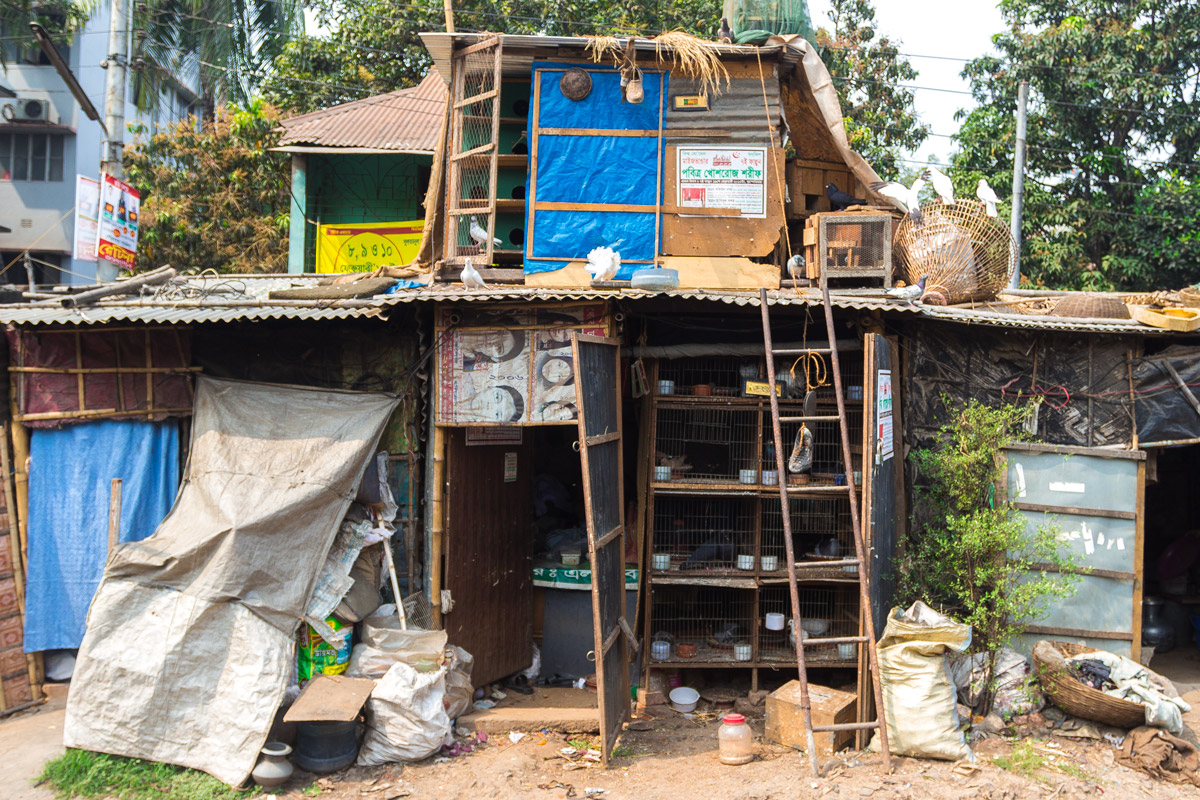

This woman is raising chickens. It’s hard not to notice how neatly and brightly she is dressed. People in the slums still take good care of themselves.

Fashionable ladies. They are dressed very well, and they are clean themselves.

People in the slums wash themselves well. They carry water from the nearest pipeline in large pitchers and pour it into small containers.

They sit next to their huts and pour water over themselves from head to toe.

Younger ones are washed by their parents.

They have no one to be shy in front of.

They don’t just wash with water. They rub themselves with some sort of soap-like substance. In the photograph: a woman sits to the right of the entrance to the house, washing her shoulders with foam. There is powdered detergent in a plastic bottle, most likely regular laundry one.


Gradually, the slums expand. The amount of garbage increases significantly.

The bungalows are quite dreadful.

Now, that’s a shack! Greenery is already starting to grow on the roof.
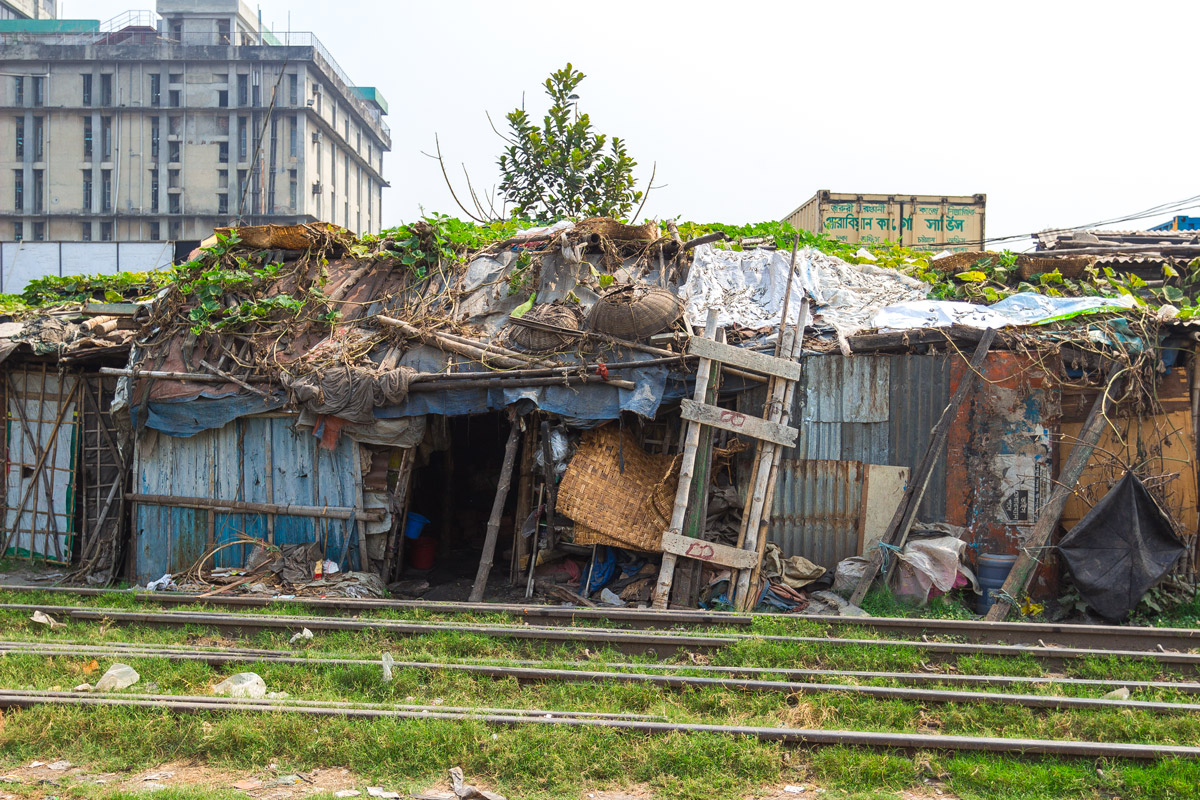
Very poor huts. The previous ones could at least pass as some form of housing, but these ones can hardly be distinguished from a pile of rags.

Here, the slums take a brief pause, getting lost amidst the branching railway tracks. Rusty freight cars stand on the rails.

I encountered a family, sitting in full formation under the train. Perhaps they don’t have a home at all?

Finally, the train passes by. One can truly grasp the magnitude of the plight: every ten to twenty minutes, a commuter train or freight train passes just a meter away from the houses, shaking the ground and the air around them.
The reader, who has never been to such places, probably thinks that slums are extremely dangerous and one should only go here with a special forces squad. This is true only for some countries in Africa and Latin America, where armed conflicts occur between gangs and the police. India, Bangladesh, Nepal, and other Asian countries are completely safe for such walks. The crime rate here is several times lower than in Moscow and on average in Russia.
I had no escort with me, and I was walking with a backpack and an expensive camera hanging around my neck. How did people react? Did they pull out knives, ropes, and surround me with screams? Of course not, they asked to be photographed.

Amazing photo in terms of content. In many Muslim countries, gestures with the index finger and the ring finger are considered offensive. Here, the guys are showing both at once.
Another detail is that the men are holding hands. They are not gay: slums have yet to reach European tolerance. It is a common gesture of friendship. Men often walk hand in hand in India, and apparently, it is also practiced in the Muslim state of Bangladesh.
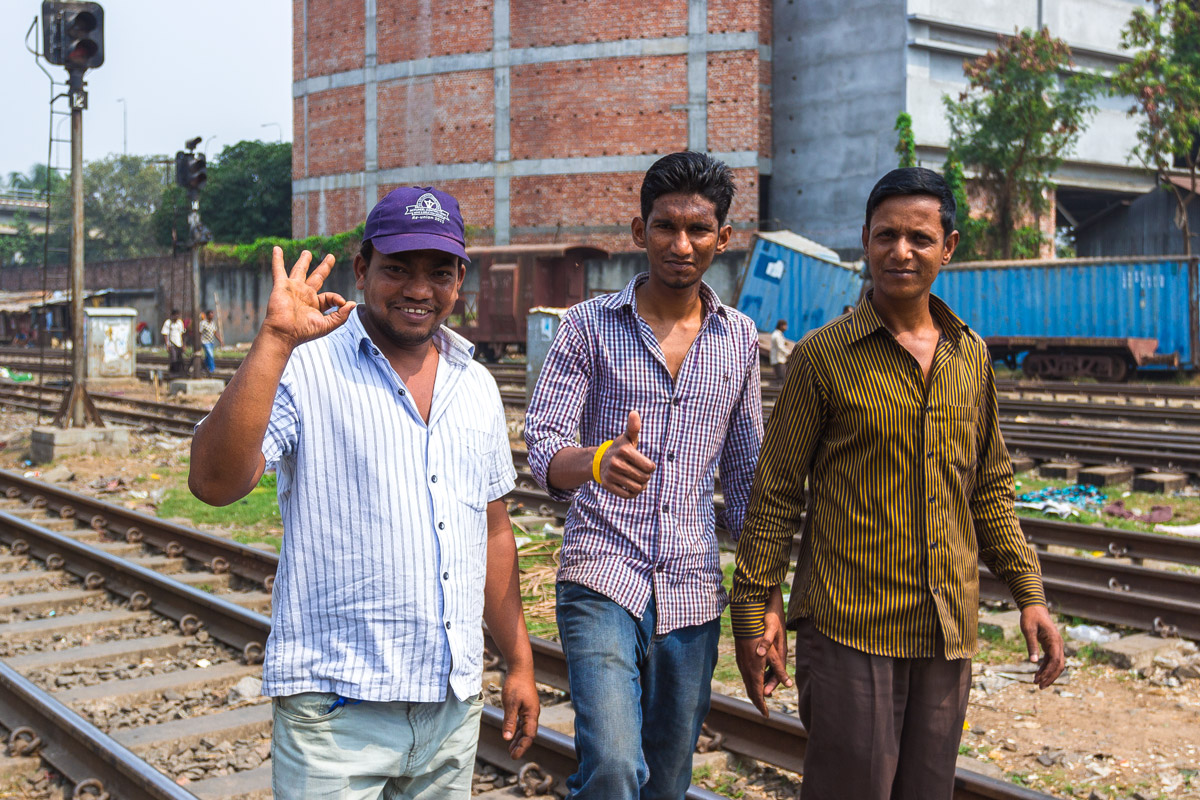
Finger up — Allah is one — shown by a red-haired Muslim. Many Bangladeshis dye their hair red.
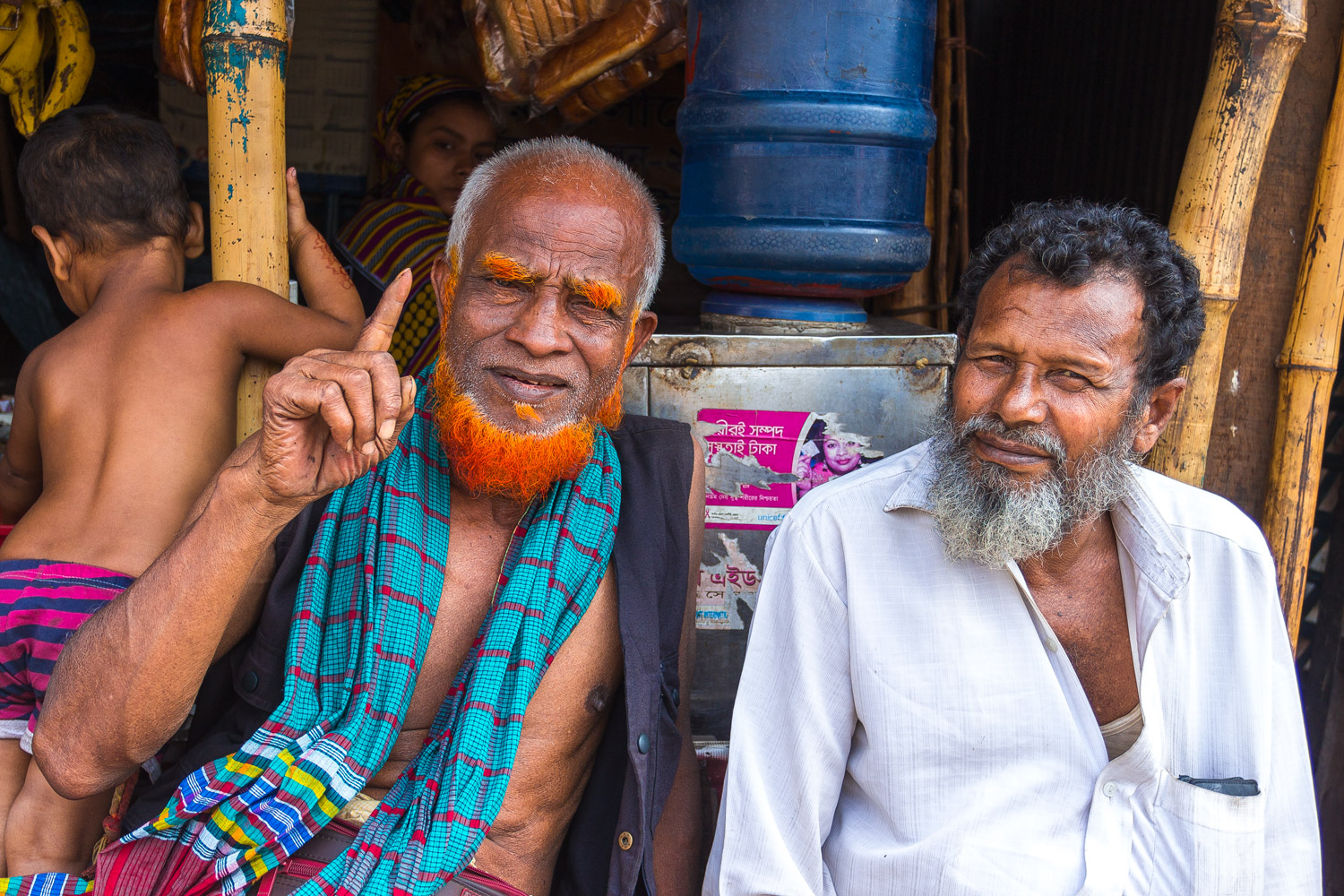
What do people do in these slums? Someone is sitting on a pile of rubble.

Someone is working. They are carrying food to the market.


They are returning from the market.

They are trading.

They are cooking.

They are washing dishes.

They are collecting garbage, plastic bottles. In Bangladesh, there is recycling of waste.

They are playing cards. There aren’t many entertainments here.

Children are flying a homemade kite. A string is wound around a plastic bottle, to which a cross made of twigs is attached, and a cellophane bag is stretched over this cross. And there you have it, the kite is ready. It reminds me of the 90s.





A farewell glance at the railway colony.

There are other slums in Dhaka as well. In general, there is no need to search for them actively here; they are self-evident. Bangladesh is an extremely poor country, and such places are scattered throughout its territory. However, everyone only knows about the slums of Bombay, which cannot be compared to the slums in Bangladesh.
Trying to bypass the lake that suddenly appeared in the middle of the city, I entered an even more unusual place that I had never seen reports about before. This place is located on the shores of Lake Banani, near the Gulshan area.

The entrance was preceded by some overgrown vegetation and loud singing from the mosque.

You need to cross the bridge next to these overgrown bushes.
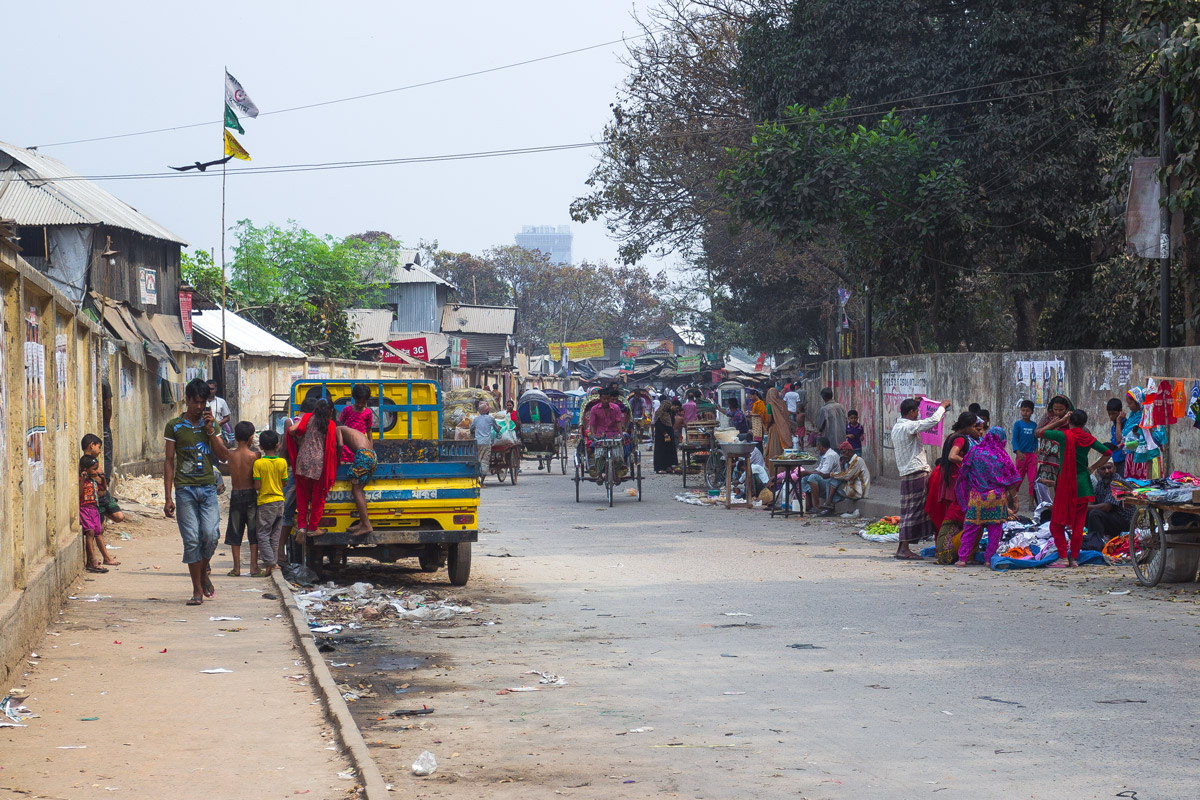
You find yourself in the middle of some market.

Homes, which are also shops, are mostly constructed here using metal coverings and corrugated sheets. There are no proper roads, but it’s better than living on the tracks.

Now this is more like Dharavi.

People here are just the same, they really love to have their photographs taken.

They are drinking tea with milk.

Just like on the tracks, it is safe here. However, getting lost in the alleys is a piece of cake. This area is marked very vaguely on the map. Once you take the wrong turn, it’s difficult to find your way out. The locals can’t provide much guidance as they don’t understand.

An absolutely incredible place is the fish market. It is located on a covered street, so it’s dark even during the day. The residents use electric light bulbs for illumination, and they came up with the idea to create beauty by placing the bulbs in cut-outs from colored plastic bottles. It looks magical.
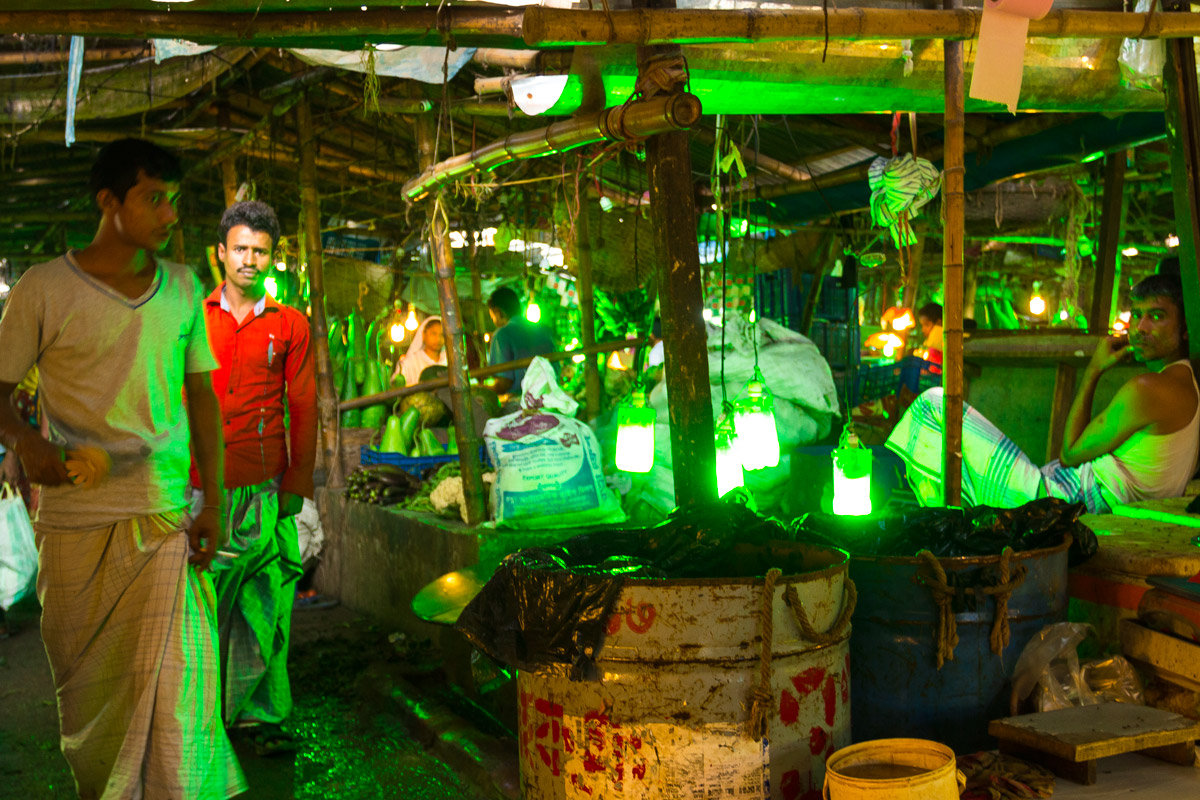
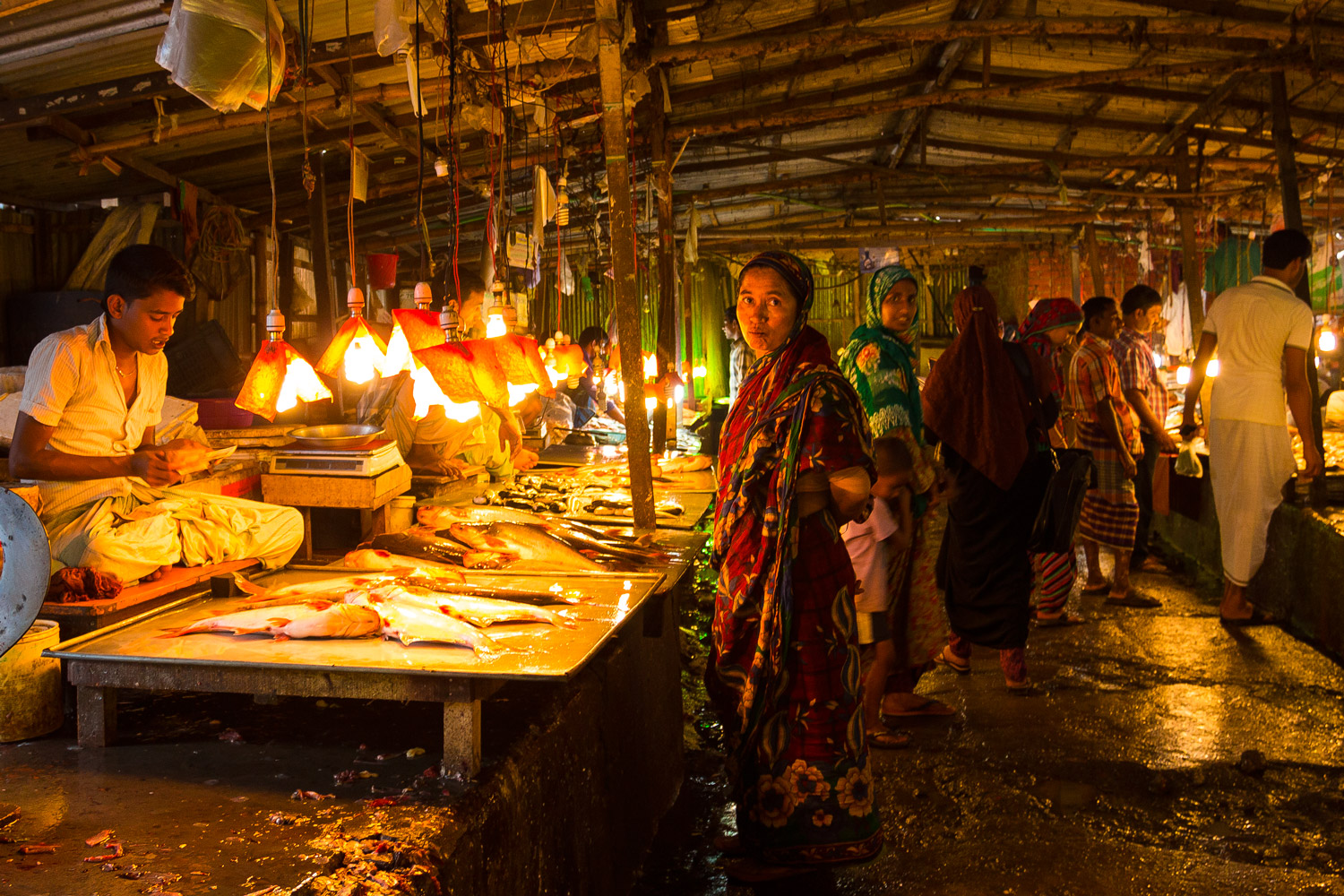
After long wanderings, I finally managed to escape from here. However, I couldn’t make it by land. The road led to the lakeshore. I had to rent a boat. It turns out that the residents of these slums commute every day by boat across the lake to the big city.
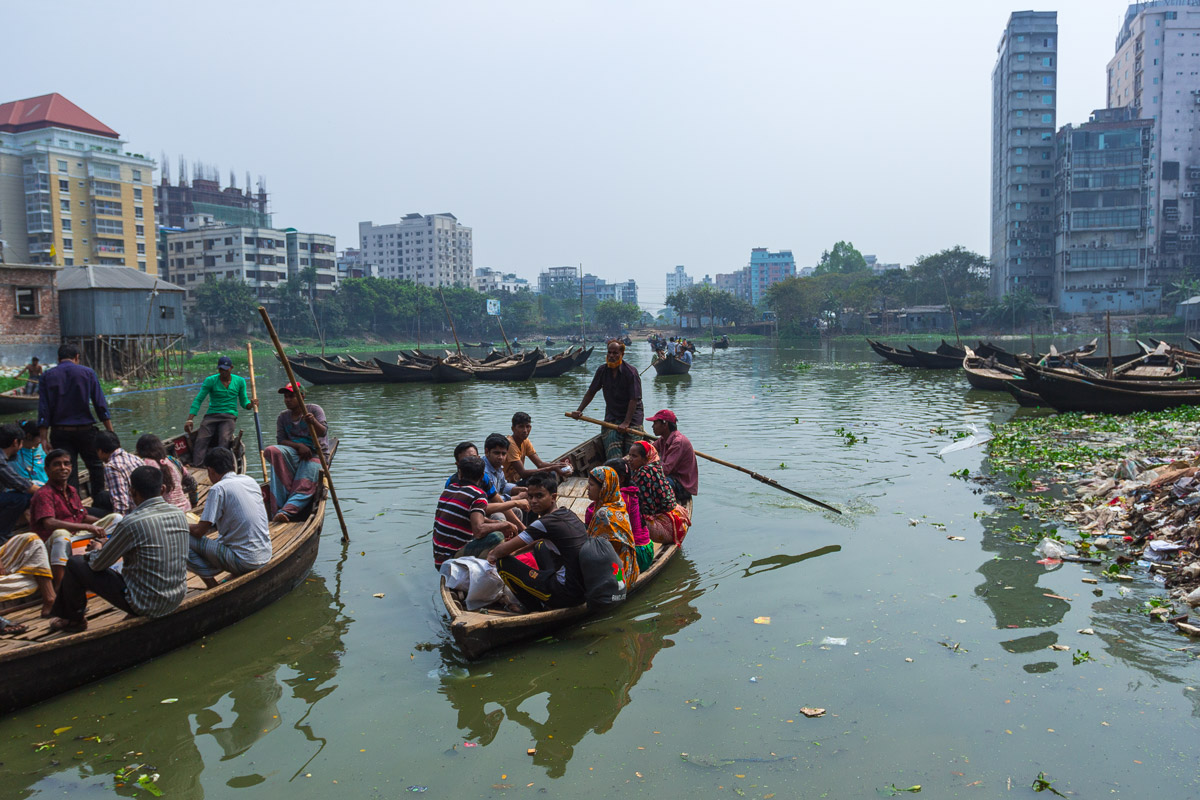
The boat ride costs only two takas, which is one and a half rubles. I didn’t have small change, so I paid twenty. The boatman probably celebrated with his whole family.

The passengers did not take their eyes off me throughout the entire trip.

From the lake, it is visible that the coastal houses are built on bamboo stilts. It’s a Vietnamese landscape.

That’s how they sail back and forth every day.


These Bangladeshis are wonderful people, just very poor.

They take care of themselves as best they can, even among their huts.

Perhaps someday the government of Bangladesh will build a bridge across the lake, so they won’t have to travel in this swarm of wooden boats.
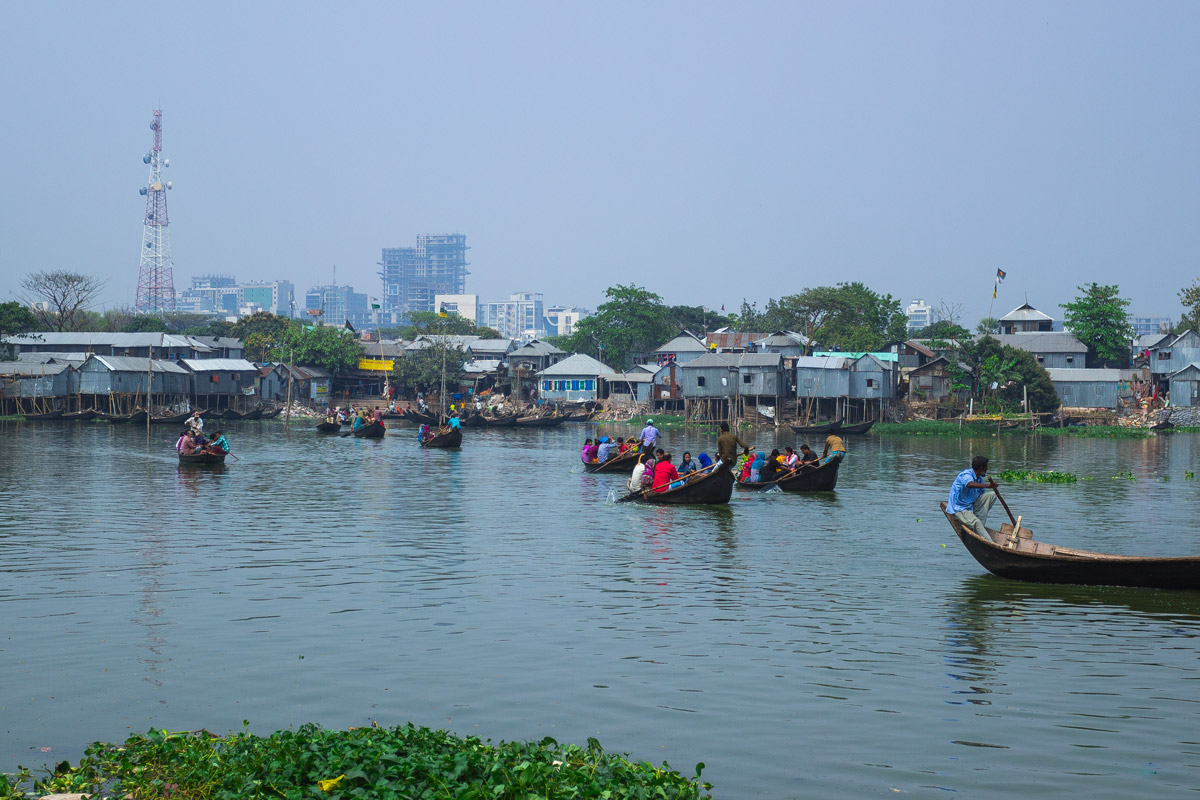
For now, they are only building luxury houses on the shore. And even those are not for them.
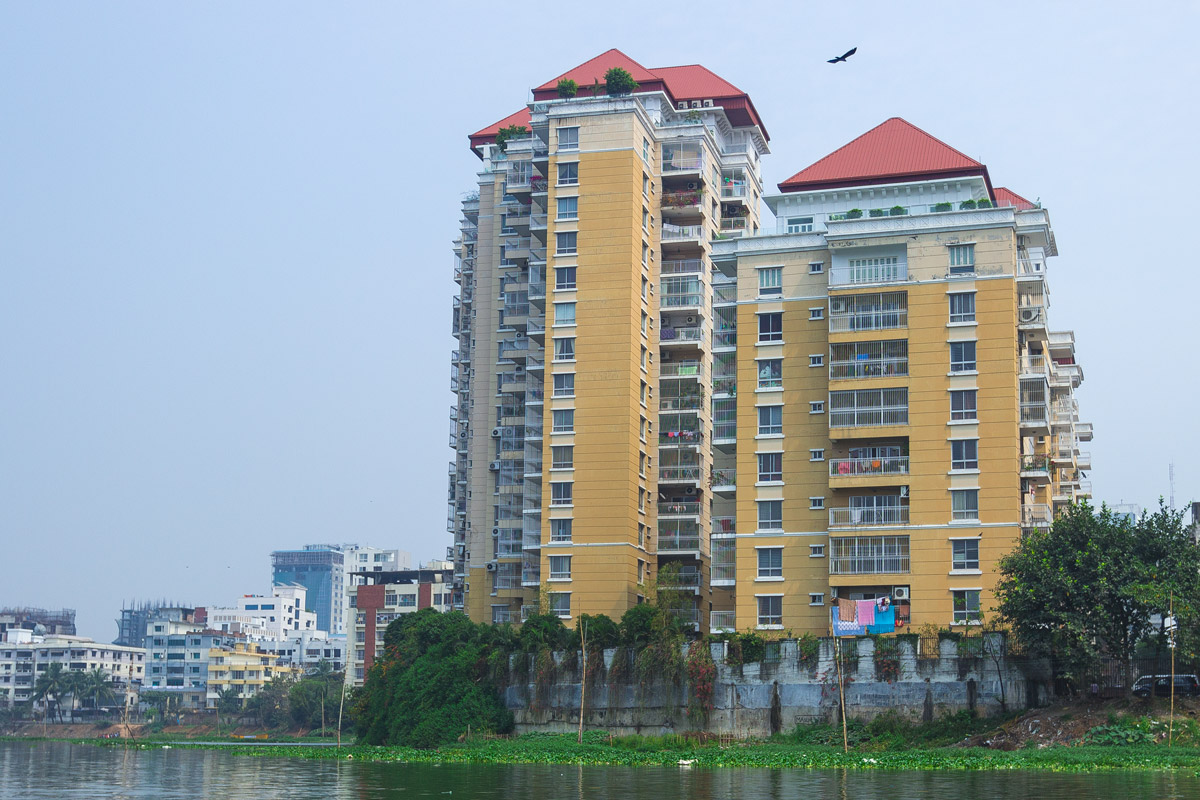
A total of 4 million people live in the slums of Dhaka.


